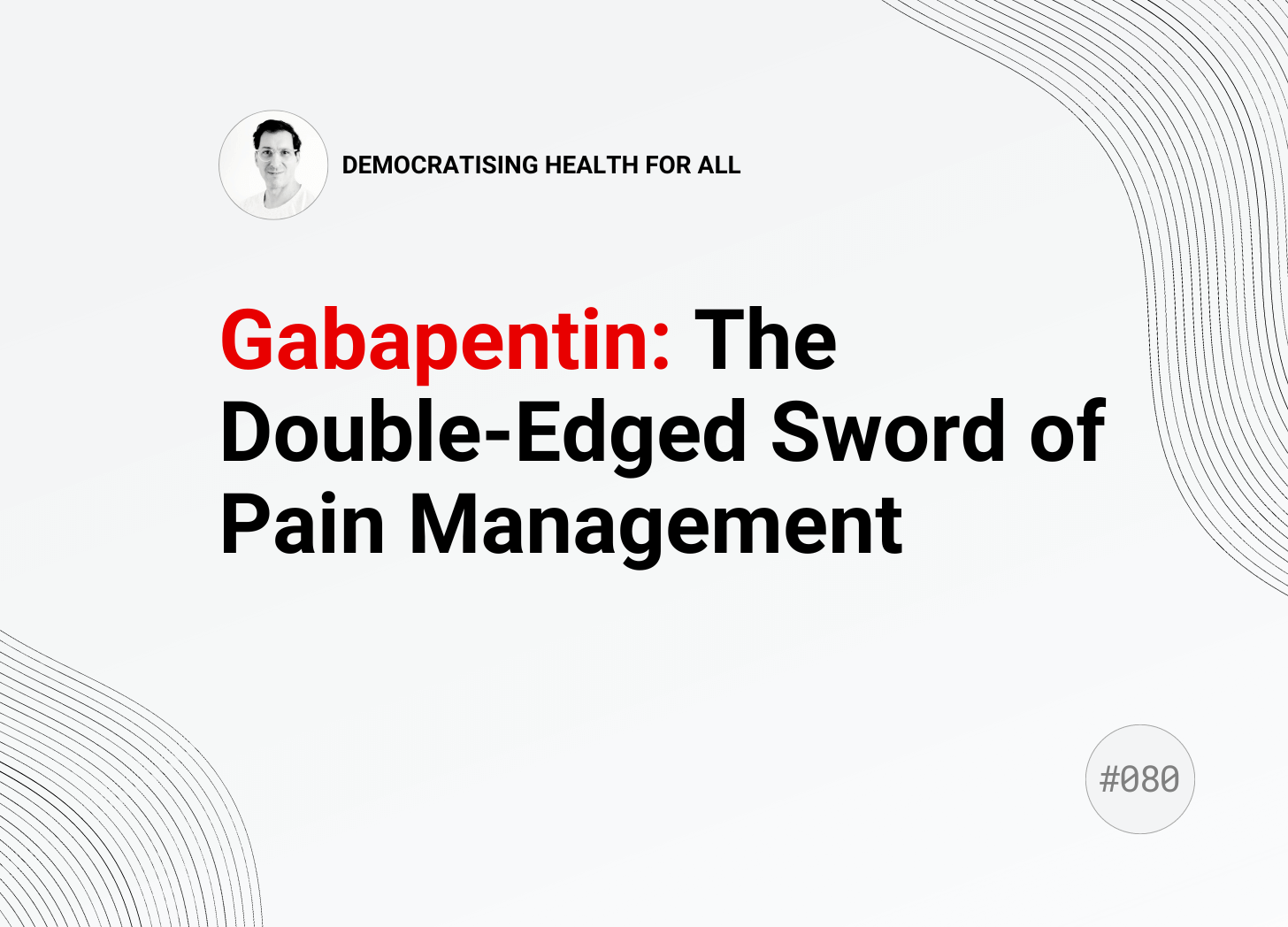#080 - Gabapentin: The Double-Edged Sword of Pain Management
Gabapentin, a medication originally approved for the treatment of partial seizures and neuropathic pain, has become one of the most widely prescribed medications in the world. Its popularity can be attributed, in part, to its perceived efficacy and safety profile, as well as its versatility in treating a range of conditions beyond its approved indications. In fact, gabapentin is often prescribed off-label for various conditions, including anxiety disorders, insomnia, bipolar disorder, and even restless leg syndrome, among others. This widespread use has led to gabapentin becoming a staple in many healthcare providers' treatment arsenals, with some estimates suggesting that up to 90% of gabapentin prescriptions are for off-label uses.
Overview of gabapentin's popularity and common off-label uses
Gabapentin's popularity can be attributed to its unique mechanism of action, which is distinct from traditional anticonvulsants and anxiolytics. Its ability to modulate voltage-gated calcium channels and inhibit excitatory neurotransmitter release has led to its use in a range of conditions characterized by excessive neuronal excitability. While its efficacy for some of these conditions is well-established, others remain more anecdotal, highlighting the need for further research to fully elucidate gabapentin's therapeutic potential.
Brief history of gabapentin's approval and marketing
Gabapentin was first approved by the US FDA in 1993 for the treatment of partial seizures, with subsequent approvals for neuropathic pain in 2002. Initially marketed by Parke-Davis (now Pfizer), gabapentin was later introduced in generic form, leading to a significant increase in its use. Over the years, gabapentin has been the subject of numerous studies, with many investigating its potential in treating conditions beyond its approved indications.
Why Gabapentin widespread use?
The purpose of this post is to examine the reasons behind gabapentin's widespread use, its effectiveness for various conditions, and associated risks. We will delve into the scientific evidence supporting gabapentin's use in both approved and off-label indications, as well as discuss the potential risks and limitations associated with its use. By providing a comprehensive review of the current state of knowledge on gabapentin, we aim to inform healthcare providers, researchers, and industry experts about the benefits and challenges associated with this versatile medication.
The Rise of Gabapentin Prescriptions
Gabapentin's popularity can be attributed to a combination of factors, including its initial approval for specific indications, aggressive marketing by the manufacturer, and its subsequent adoption as a safer alternative to opioids.
Initial approval for epilepsy and postherpetic neuralgia
Gabapentin was first approved by the US FDA in 1993 for the treatment of partial seizures, with a subsequent approval in 2002 for the treatment of postherpetic neuralgia (PHN), a complication of shingles. Initially, gabapentin was marketed by Parke-Davis (now Pfizer) as a treatment for these specific conditions, with a relatively modest market presence. However, as the medication's efficacy and safety profile became more widely recognized, its use began to expand beyond its approved indications.
Aggressive marketing by the manufacturer and subsequent legal actions
In the early 2000s, Pfizer, the manufacturer of gabapentin, launched an aggressive marketing campaign to promote the medication's use for a range of conditions, including bipolar disorder, anxiety disorders, and migraines. While some of these uses were supported by clinical evidence, others were not, and the company's marketing tactics were criticized for being overly promotional. In 2004, Pfizer pleaded guilty to charges of misbranding gabapentin and paid a $430 million settlement to the US Department of Justice. Despite this setback, gabapentin's popularity continued to grow, driven in part by its perceived efficacy and safety profile.
Increase in prescriptions amid the opioid crisis as a safer alternative
In the mid-2000s, the US began to experience a growing opioid crisis, driven in part by the overprescription of opioid pain medications. As concerns about opioid safety and addiction grew, healthcare providers began to seek out alternative treatments for chronic pain and other conditions. Gabapentin, with its relatively favorable safety profile and lack of addictive potential, became an attractive option for many providers. As a result, gabapentin prescriptions began to rise sharply, with some estimates suggesting that prescriptions increased by as much as 50% between 2012 and 2016. Today, gabapentin is one of the most widely prescribed medications in the US, with over 64 million prescriptions written in 2020 alone.
Keep reading with a 7-day free trial
Subscribe to Democratising Health For All to keep reading this post and get 7 days of free access to the full post archives.


